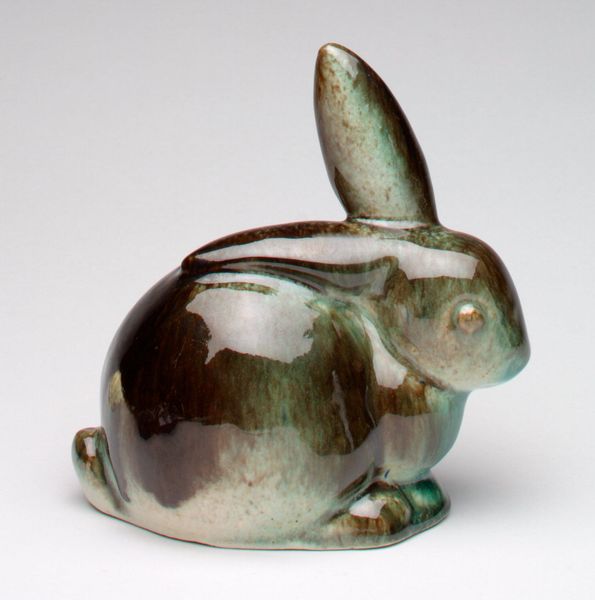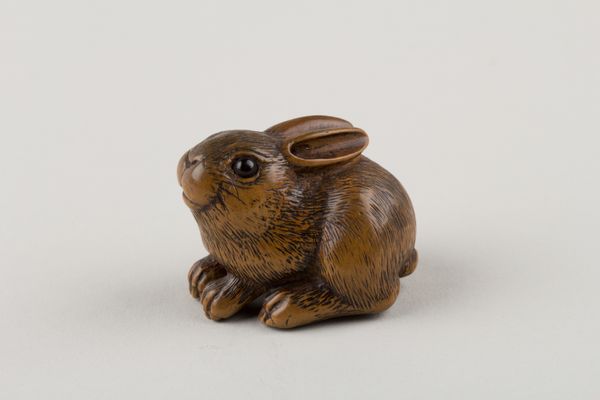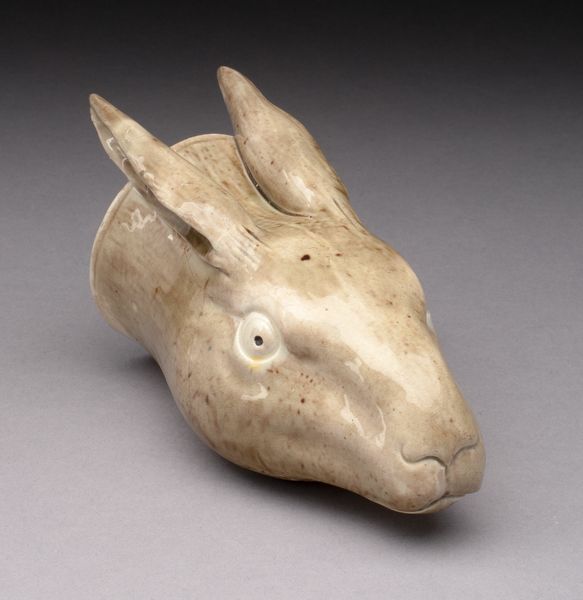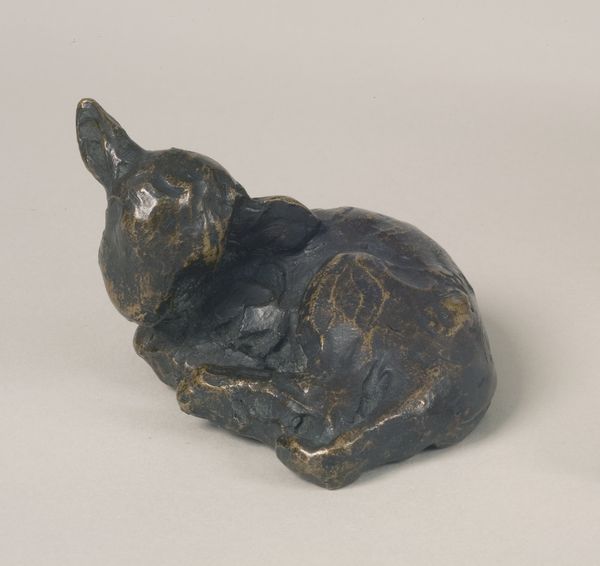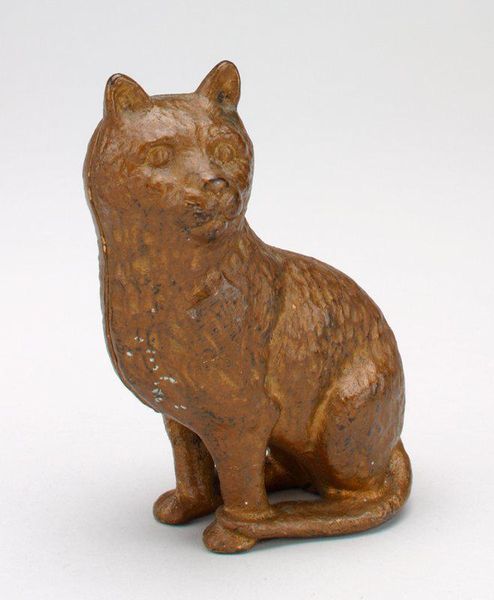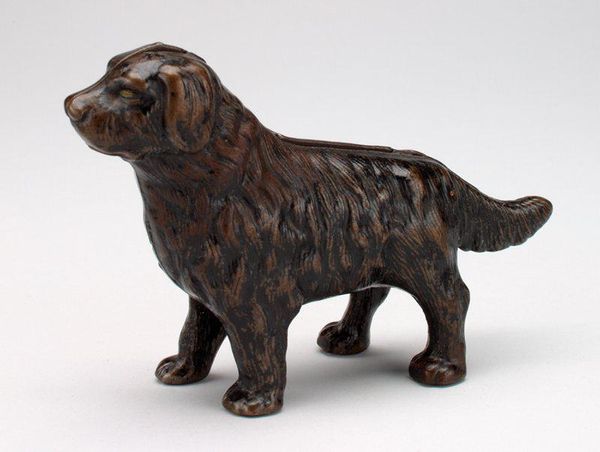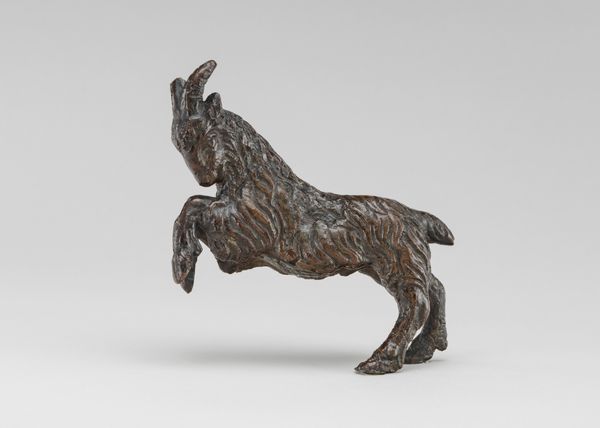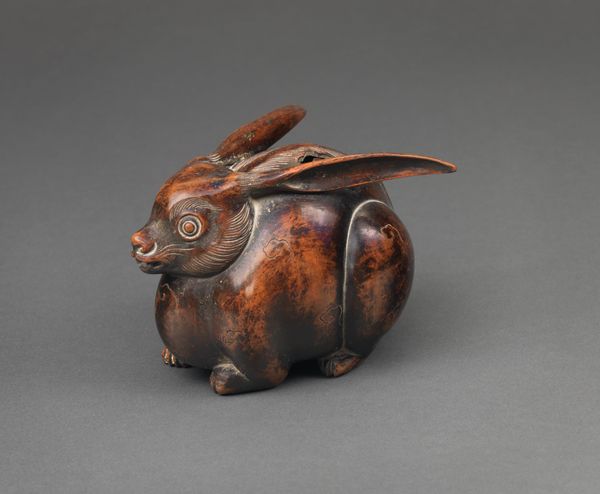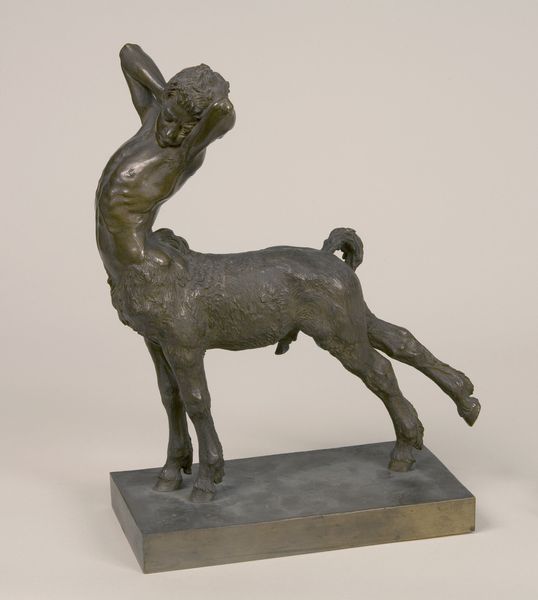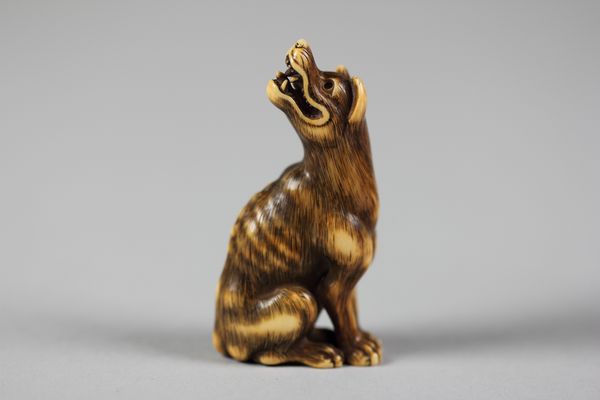
sculpture, wood
#
3d sculpting
#
animal
#
figuration
#
sculpting
#
sculpture
#
wood
Dimensions: 3 11/16 x 3 15/16 x 1 1/2 in. (9.37 x 10 x 3.81 cm)
Copyright: No Known Copyright
Curator: Welcome. Before us is "Seated Rabbit," a delightful wood sculpture crafted circa 1910s-1920s, brought to life by the Arcade Manufacturing Company, and currently residing here at the Minneapolis Institute of Art. Editor: My first impression? The sculpture's texture creates such a strong tactile sense. There’s a mottled, almost distressed surface quality to it that draws you in, doesn’t it? It has this worn look that brings immediate feelings of nostalgia, but with what feels like an implied history of labor—it gives it weight. Curator: It's interesting that you point that out. Arcade Manufacturing wasn’t necessarily aiming for fine art. During that period, companies like Arcade utilized figuration in sculpture as a potent way to promote their status in industrial labor and play—toy production—and by doing so it gave animals, like this rabbit, greater commercial recognition within cultural landscapes and everyday homes. Editor: Absolutely, and if we look closely at the composition, we see how skillfully they captured the essential form of the rabbit. It’s stylized, but perfectly balanced and very engaging. I am thinking about the subtle angling of the legs to show how alert the rabbit appears, even without much detail. Curator: That positioning invites consideration as well to its relationship to cultural dynamics, considering that rabbits hold potent symbolism as fertility and auspicious signs in some indigenous cultures while in Western culture it denotes purity, timidity, or childlike behavior. With the Arcade Manufacturing's positioning, one questions whether these associations served as ways to reinforce ideas that children, especially young girls who may have wanted the toy as a gift, needed care, were quiet, and so on. Editor: That's a potent observation! Yet I find myself drawn back to the tactile element— the intersection of materiality, form, and its relation to the semiotics of the animal form invites us to consider how we impose symbolic and relational meaning on something so elementary. Curator: I'd agree—the tactile and historical interplay beautifully captures both the artistry of industry and the rabbit’s multifaceted role in broader social conversations. Editor: Indeed— a compact yet resonant piece.
Comments
No comments
Be the first to comment and join the conversation on the ultimate creative platform.
